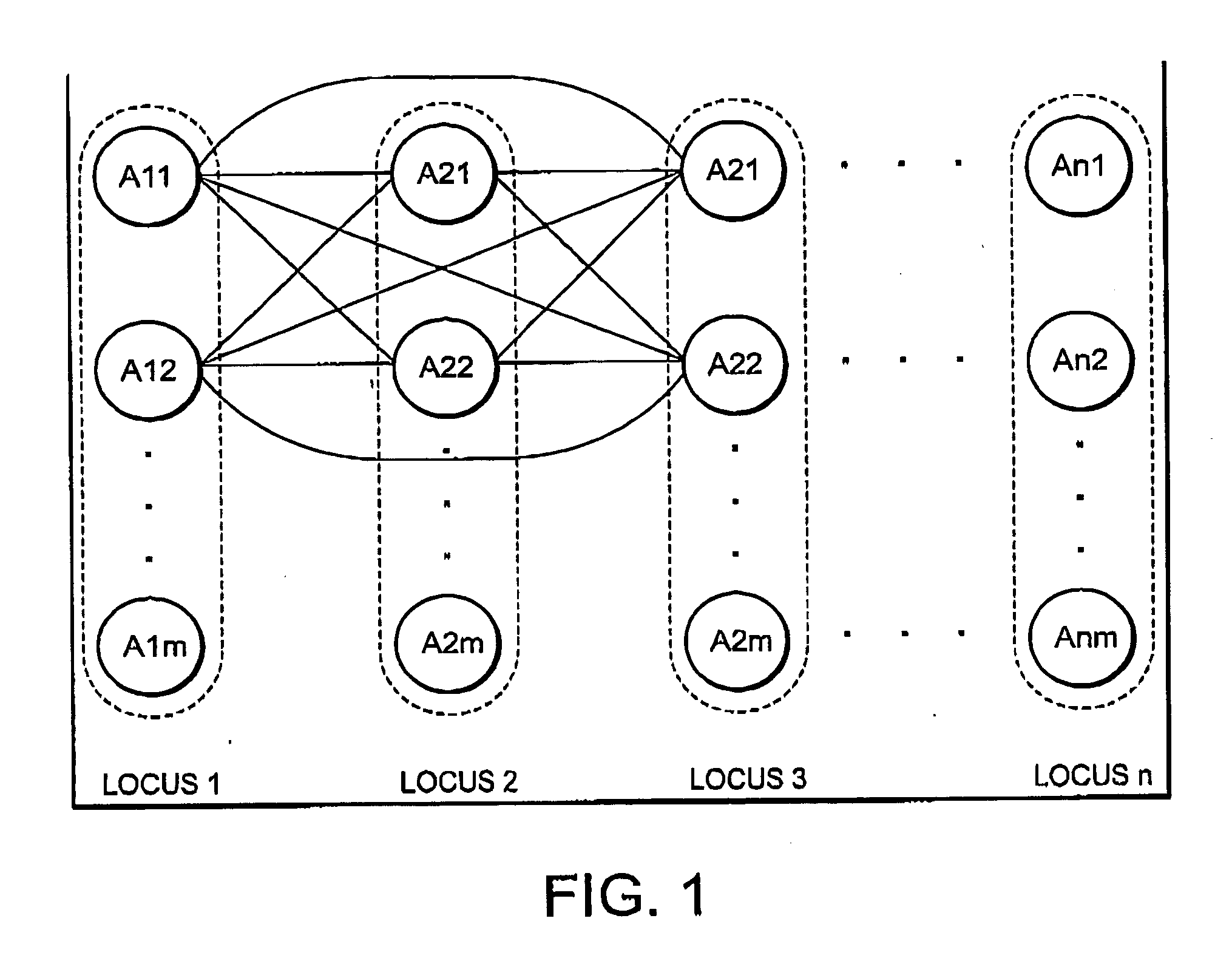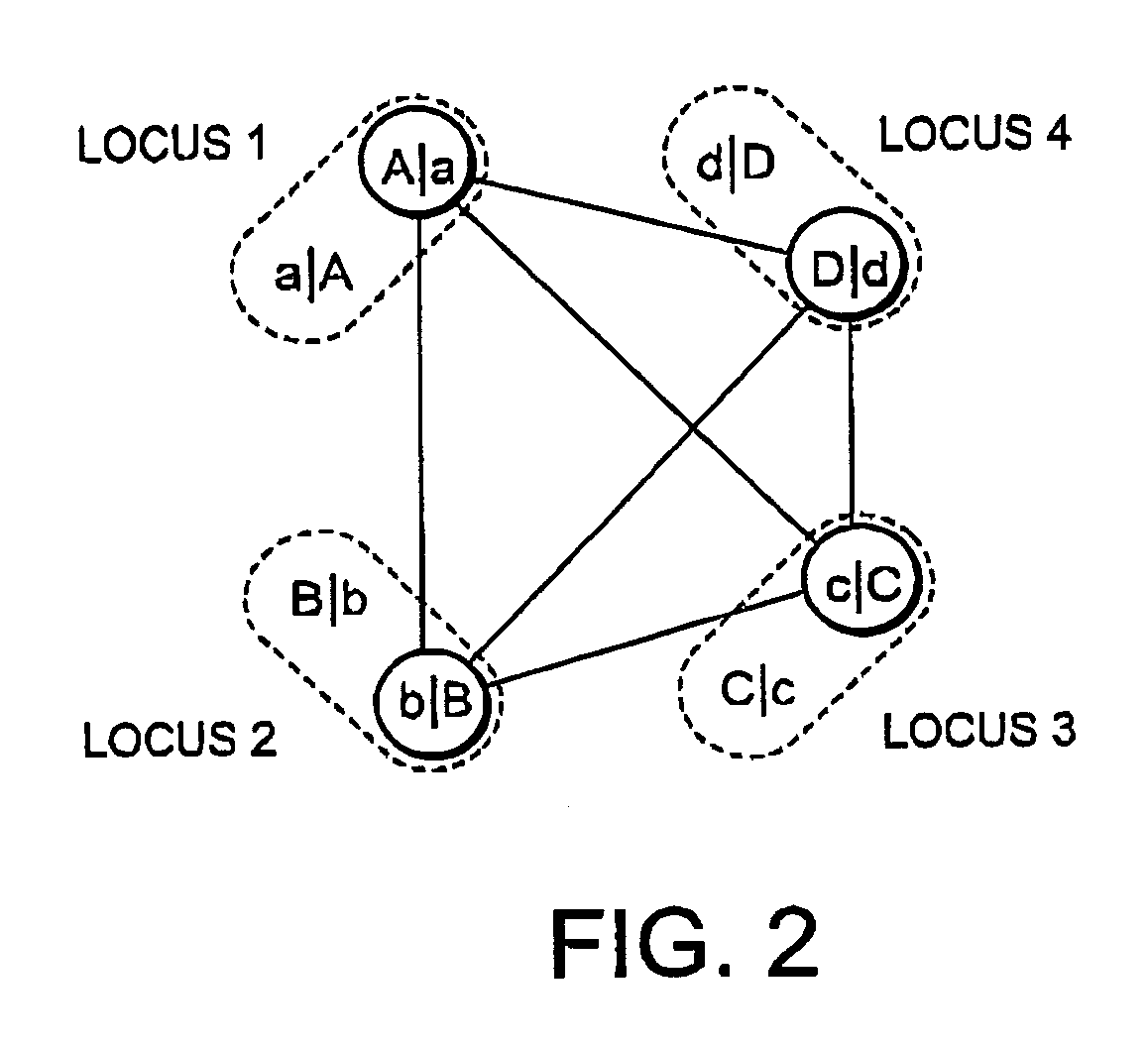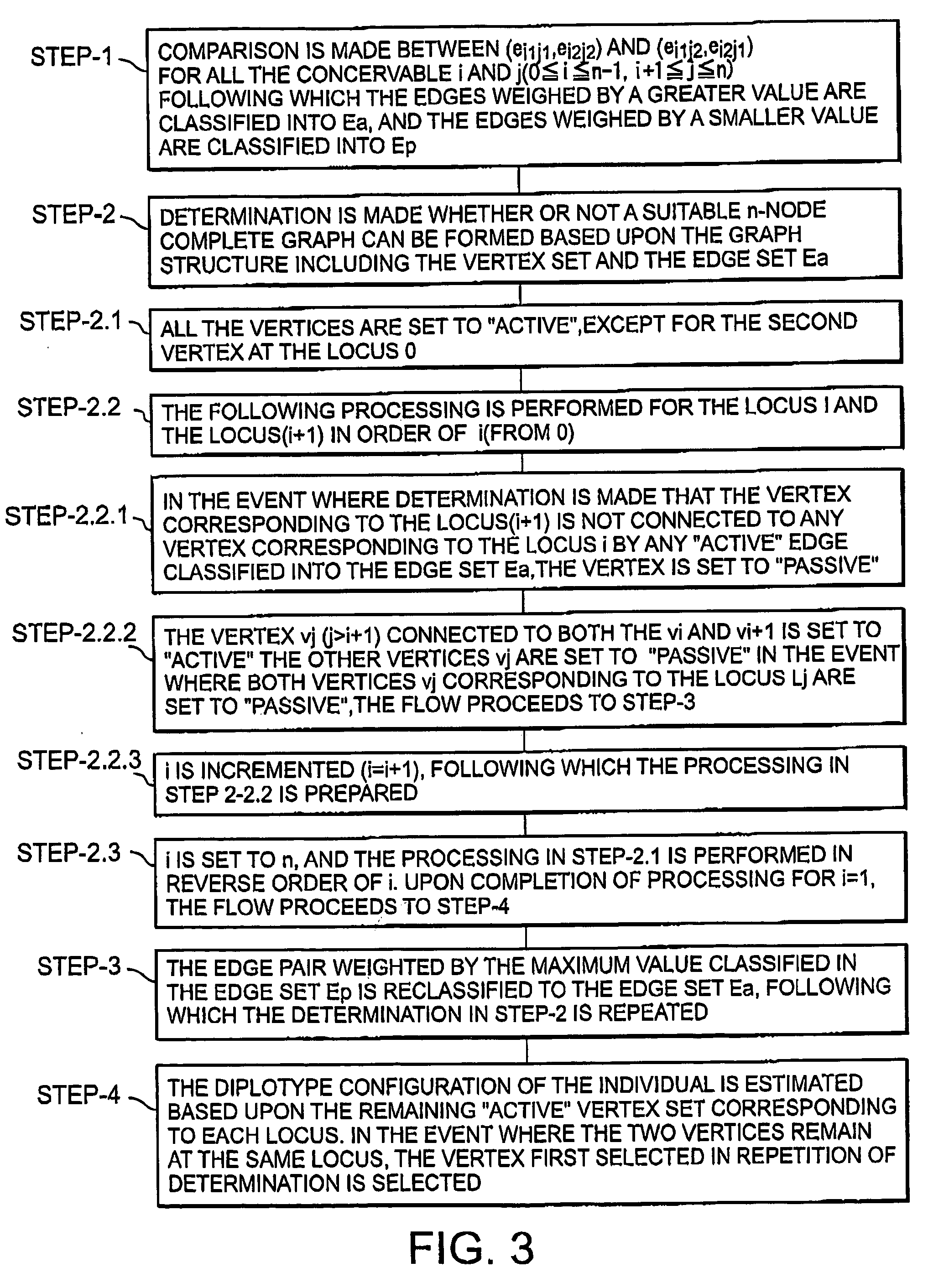Haplotype estimation method
a technology of haplotype and estimation method, applied in the field of haplotype estimation method, can solve the problems of insufficient population, insufficient population, and inability to maintain the same chromosome completely, and achieve the effects of short data processing time, reduced processing time, and high precision of estimation
- Summary
- Abstract
- Description
- Claims
- Application Information
AI Technical Summary
Benefits of technology
Problems solved by technology
Method used
Image
Examples
example 1
[0118] The present inventors made analysis for two kinds of data sets of disclosed real data and the simulation data, and made comparison for the precision and execution time between the present analyzing method and the EM algorithm. In particular, comparison was made for the execution time between the present analyzing method and other software for handling haplotype estimation of the multiple loci, Description will be made below regarding the estimation results.
[0119] The present inventors measured the execution time using the SNP data regarding the IBD in the 5p31 region of the human chromosome disclosed in Reference 31. FIG. 5 shows the measurement results. Herein, “LDSUPPORT” disclosed in the Reference 22 was used as software using the EM algorithm.
[0120] As can be understood from FIG. 5, the EM algorithm exhibits high processing speed for a small number of the loci. However, the haplotype estimating method (idlight) according to the present invention always exhibits shorter ...
PUM
 Login to View More
Login to View More Abstract
Description
Claims
Application Information
 Login to View More
Login to View More - R&D
- Intellectual Property
- Life Sciences
- Materials
- Tech Scout
- Unparalleled Data Quality
- Higher Quality Content
- 60% Fewer Hallucinations
Browse by: Latest US Patents, China's latest patents, Technical Efficacy Thesaurus, Application Domain, Technology Topic, Popular Technical Reports.
© 2025 PatSnap. All rights reserved.Legal|Privacy policy|Modern Slavery Act Transparency Statement|Sitemap|About US| Contact US: help@patsnap.com



